Biceps reinsertion
1. General considerations
Timing of surgery
Reattachment of the distal biceps tendon should be performed within a few days of injury. After three weeks the tendon will have retracted and shortened, and the tendon tract will have begun to scar over.
Indication
Surgery is indicated in patients with functional impairment. If the patient needs strength of elbow flexion and forearm supination, repair is usually advisable.
Options
The biceps tendon can be reattached with either a two-incision approach to the proximal radius, or a single anterior approach (limited Henry approach). Make sure to “milk” the biceps inferiorly before inflating the tourniquet. Otherwise the tendon will be too short.
Note: The two-incision approach reduces the risk of radial nerve injury. As a potential disadvantage, it may cause a synostosis.
2. Positioning
The patient is placed in a supine position for anterior access.
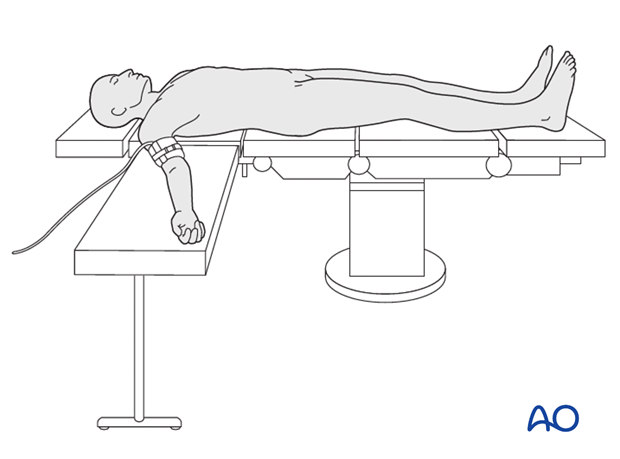
3. Option 1: Tendon through bone tunnel (two-incision approach)
First skin incision
Make a 4 cm transverse incision in the antecubital crease. Alternatively, a lazy S can be used to allow more exposure (anterior approach).
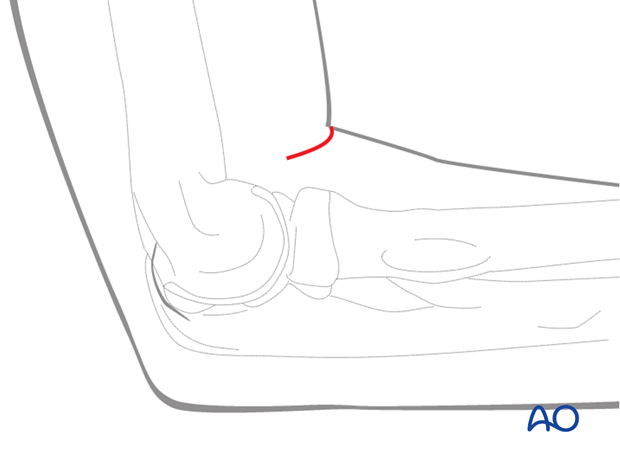
Identification of the tendon
Identify the biceps tendon and bring it out of the wound. The tendon is often retracted proximally. By flexing the elbow and/or squeezing biceps muscle from proximal to distal the torn end of the tendon presents itself in the wound.
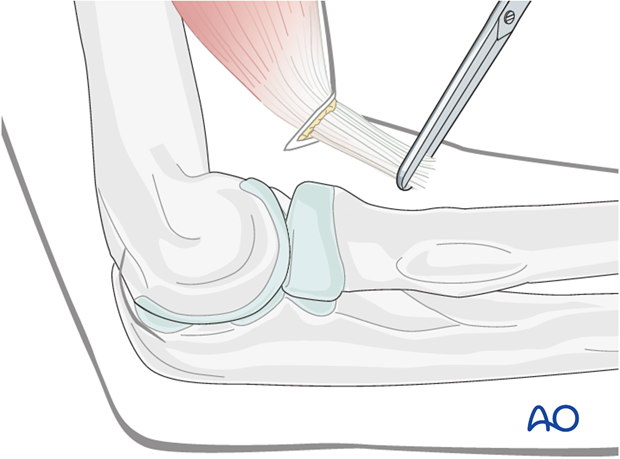
Tendon preparation
The tendon is debrided.
Insert two Nr. 5 nonabsorbable sutures into the tendon, using a crisscrossed locking stitch.
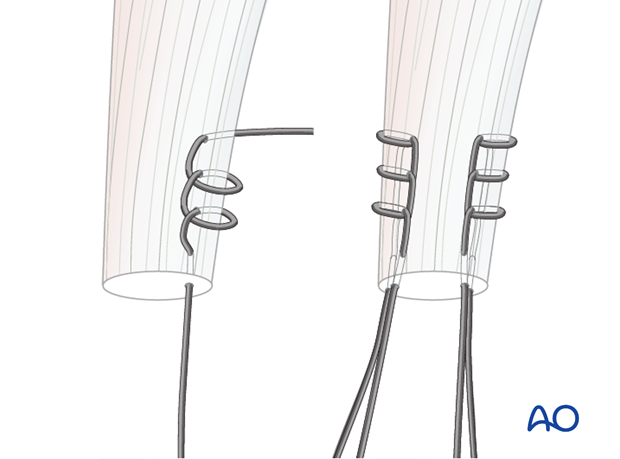
Prepare tunnel for tendon reattachment
Introduce a clamp into the biceps tendon tunnel opposed to the bicipital tuberosity and between the radius and ulna. Advance the clamp until it reaches the skin of the dorsal aspect of the forearm.
Incise the skin over the clamp.
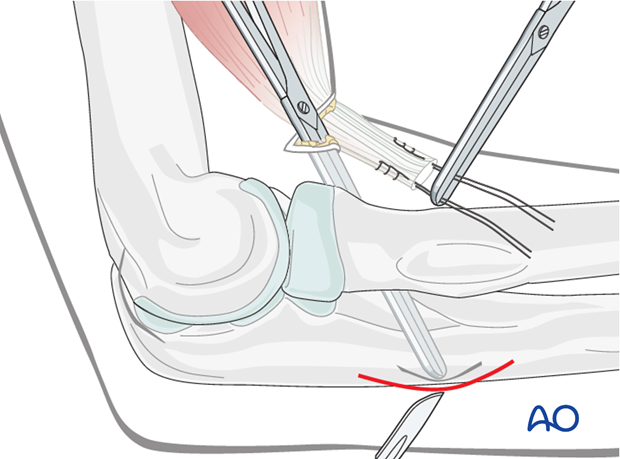
Through the posterior incision, split the common extensor and supinator muscles exposing the bicipital tuberosity of the radius in full pronation.
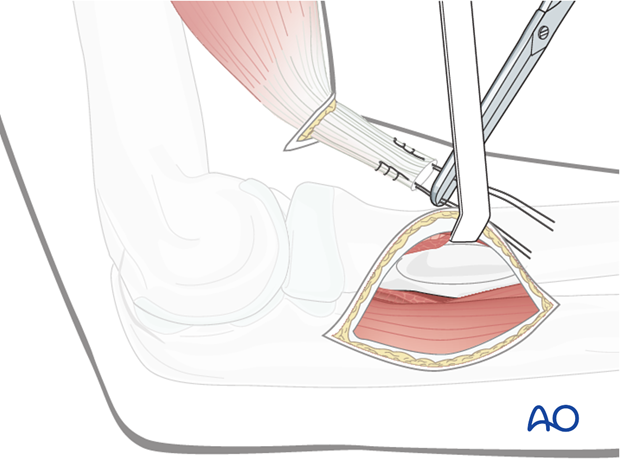
Radial tuberosity
The radial tuberosity is identified through the posterior incision.

Reattachment preparation
Remove tendon remnants from the bicipital tuberosity to expose bare bone.
Prepare a trough for the tendon. Excavate it with a high-speed burr, under cooling, into a cavity of approximately 10×8mm, and 5 mm deep.
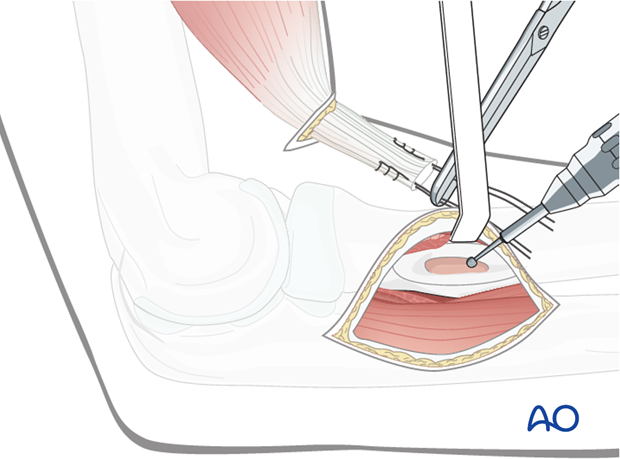
Place three small drill holes on the anterior side of the trough.
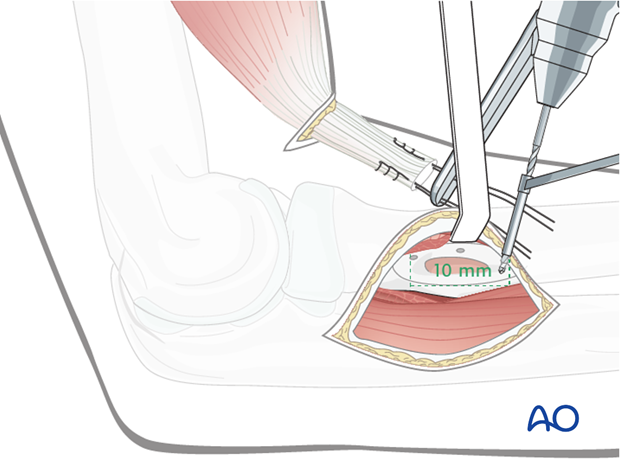
Tendon passage
With its attached sutures, bring the biceps tendon through the soft-tissue tunnel from the anterior incision to the posterior incision.
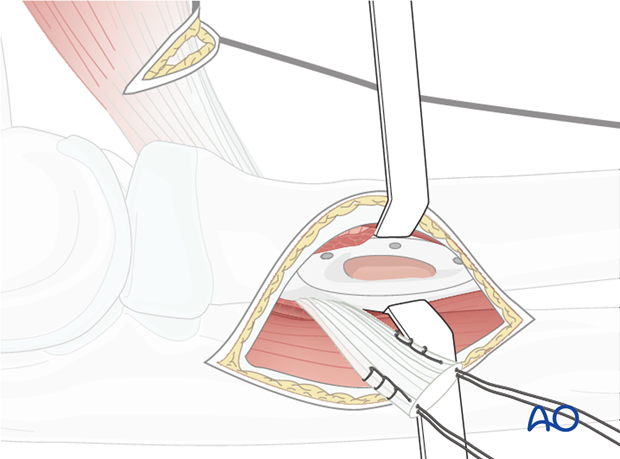
Tendon reinsertion
Suture the tendon into the trough in the bicipital tuberosity. The sutures are placed through the prepared holes as shown.
Check tendon reinsertion during supination and pronation.
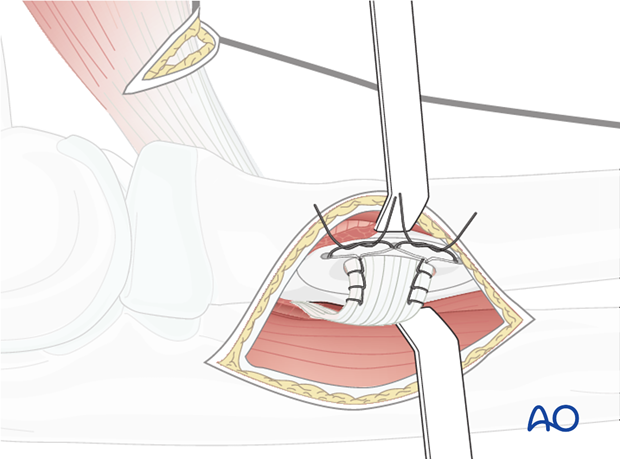
4. Option 2: Suture anchors (anterior approach)
Preliminary remark
Alternatively, the biceps tendon can be reinserted into the bicipital tuberosity of the radius with suture anchors through an anterior approach.
Embedding two suture anchors
Create a shallow trough for tendon reinsertion in the bicipital tuberosity with a high-speed burr to expose bleeding cortical bone. Place two suture anchors into the trough as shown.
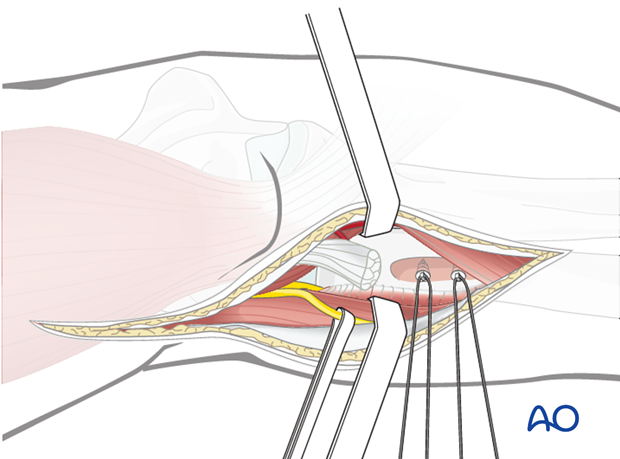
Tendon reinsertion
Trim the end of the tendon to a smooth fresh surface. Weave the anchored sutures securely, but so they will slide, through the tendon end.
Next, advance the tendon end into the excavated tuberosity, such that it contacts the bone well. Tie the sutures with the forearm in neutral position.
Check the reinsertion site during pronation and supination.
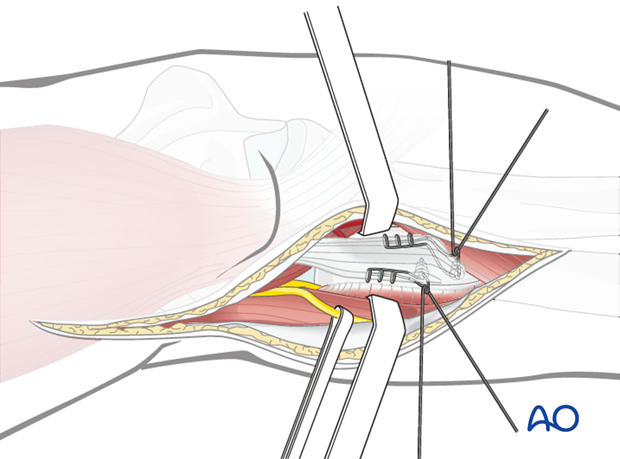
5. Postoperative treatment following reinsertion of the biceps tendon
Apply a posterior splint with the elbow in 90 degrees of flexion and the forearm in neutral rotation for one week.
Thereafter the splint is removed and gentle passive flexion and active extension to 30 degrees is allowed. Four weeks after surgery the patient may flex and extend the elbow against gravity.
Full activity without restriction is allowed at six months.













